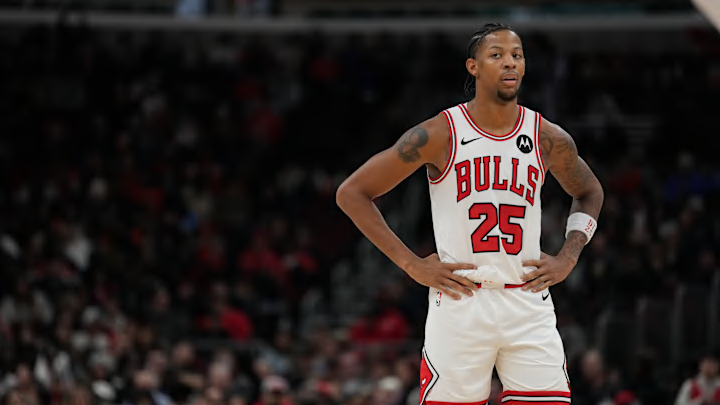As the Chicago Bulls lean into their youth-driven roster for the 2025–26 season, fourth-year guard Dalen Terry stands out as one of the most intriguing players to watch. He may not receive the same headlines as teammates Matas Buzelis, Josh Giddey, or Coby White, but Terry's combination of defensive versatility and a steadily developing offensive game could make him a key contributor to Chicago's second unit.
Glimpses of two-way potential
While Terry has yet to earn significant playing time, he has shown flashes of the two-way potential that made him the 18th overall pick three years ago.
Since entering the league as a 20-year-old rookie from the University of Arizona, Terry has steadily increased his role off the bench, improving from 5.6 minutes per game as a rookie to 13.5 minutes in his third season.
On the defensive end, Terry has been remarkably consistent. His length and athleticism allow him to guard any position one through four, and his on-ball pressure, combined with smart rotations, makes him a great asset for a team emphasizing defense and physicality.
Offensively, Terry hasn't proved himself to be a reliable scorer yet, but he has shown growing confidence in attacking the rim and taking shots from beyond the arc. If he can start the season shooting consistently from three-point range, he could become a meaningful contributor to the second unit.
Potential roles in 2025–26
With Chicago's current roster construction, their wing positions are relatively thin, giving Terry an opportunity to see more consistent minutes if he continues developing offensively and uses his versatility to his advantage.
The first role he can take on is the pure 3-and-D wing. The Bulls lack players who can both score efficiently and defend at a high level, with Ayo Dosunmu being the only wing who is reliable at both. Terry could step in as a complementary piece who spaces the floor and provides defensive stability.
The other role he could take on comes as a small ball forward. At 6-foot-7 with a 7-foot-1 wingspan, Terry has the frame to keep up with bigger forwards despite being slightly undersized for a traditional power forward. His combination of length, defensive awareness, agility, and improving shooting makes him a natural fit for modern small-ball lineups, where versatility and switching matter more than strict positional size.
What to look out for
Terry is likely to fluctuate around 14–18 minutes per game this season. He obviously won’t be asked to carry the offense, but even slight improvements in efficiency could make him a valuable rotation piece.
Quietly, Terry’s growth heading into his fourth season could be one of the Bulls’ most important storylines, especially in a year with minimal playoff expectations. If his shot becomes more consistent, he could play a key role in shaping Chicago’s 2025–26 campaign.
